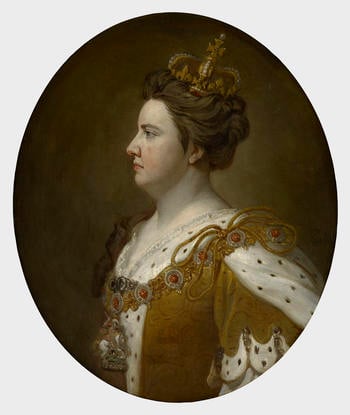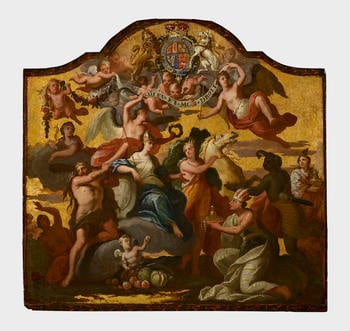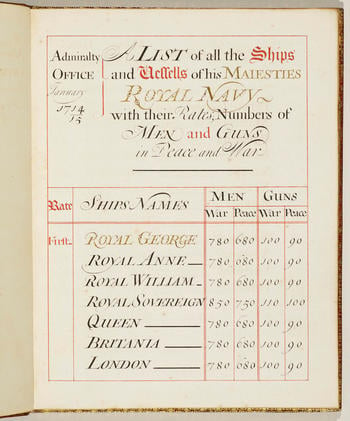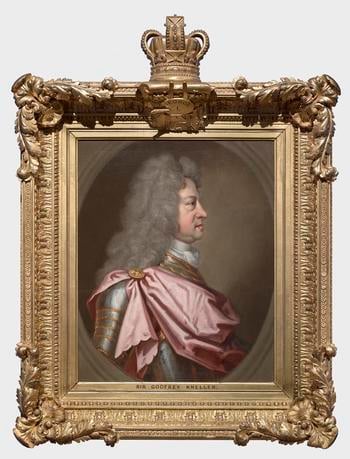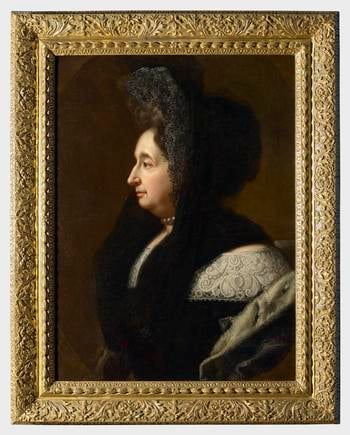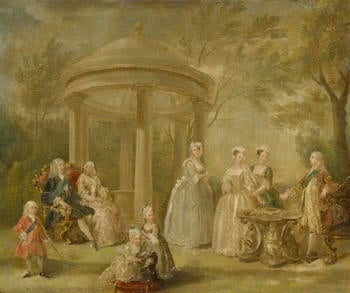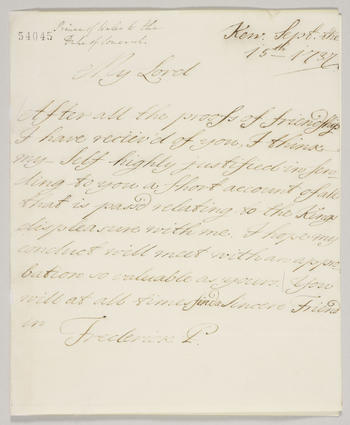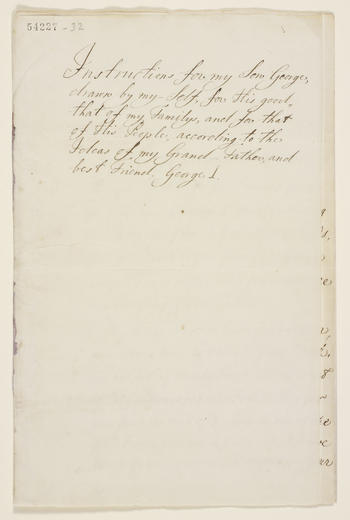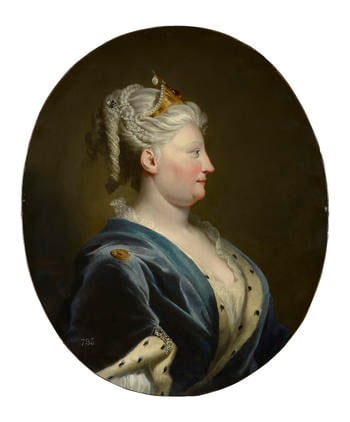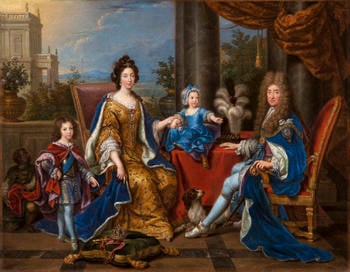
Explore the exhibition

Frame for RCIN 403401, Kneller, George I, King of Great Britain and Ireland, Elector of Hanover Royal Collectiojn Trust/© His Majesty King Charles III 2022
In 1714 Queen Anne died without surviving heirs; she was succeeded by her second cousin, Georg Ludwig, Elector of Hanover. Parliament chose George I because he was Protestant; while the heir to the throne by blood, James Stuart, was Catholic. In the early Georgian period (1714 – 1760), these two dynasties, Stuart and Hanoverian, and two factions in Parliament, Tory and Whig, fought over the succession and the constitution.
Meanwhile a new type of society emerged in Britain – free, diverse, prosperous and enlightened. The new royal family joined in the dynamic and factional life of the capital; for most of the period the Princes of Wales maintained their courts in town houses and behaved like fashionable members of the aristocracy. George II spent ten years out of favour before succeeding his father in 1727; his son, Frederick, Prince of Wales, similarly led an opposition faction. Queen Caroline, the most popular member of the royal family, studied British history and championed the new developments in British science.
British culture at this time was a mixture of the conventional and the revolutionary. This is the ‘Georgian Age’, elegant and polite; it is also the ‘Age of Hogarth’, a time of speculation, greed, squalor and savage satire.
Sir Godfrey Kneller (1646-1723)
Queen Anne (1665-1714)
Sir James Thornhill (1675-1734)
Panel for a Royal State Coach: Britannia Receiving Homage from the Continents.
Studio of Sir Godfrey Kneller (1646-1723)
George I, King of Great Britain and Ireland, Elector of Hanover (1660–1727)
Attributed to Noel Jouvenet III (d. 1698)
Electress Sophia of Hanover (1630-1714)
William Hogarth (1697-1764)
The Family of George II
Frederick, Prince of Wales (1707 – 51)
Letter regarding the King
Frederick, Prince of Wales (1707 – 51)
Instructions for my Son George
Joseph Highmore (1692-1780)
Queen Caroline of Ansbach (1683-1737)
Pierre Mignard (1612-95)
James II and Family
Johann Sebastian Müller (1715-1792)
